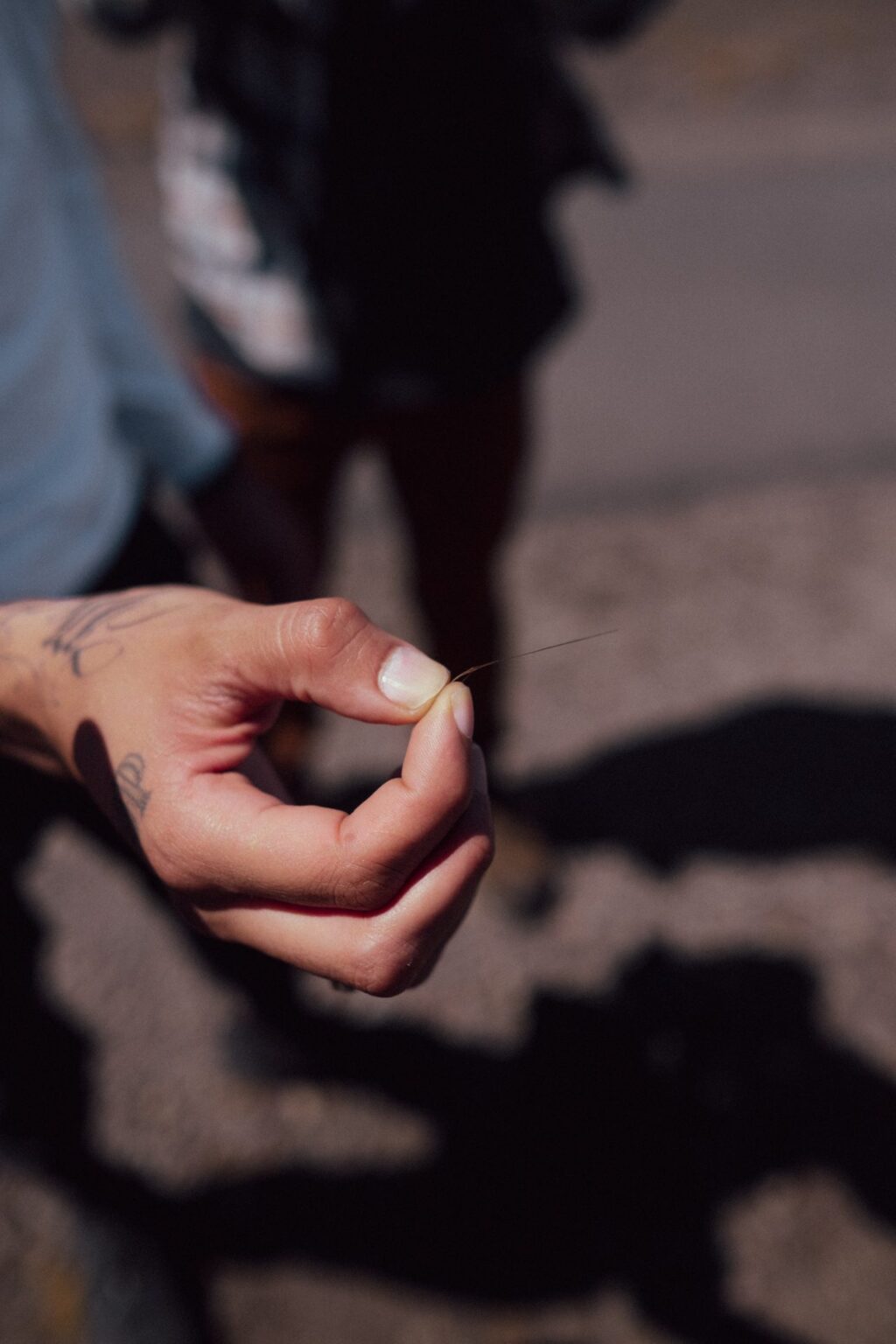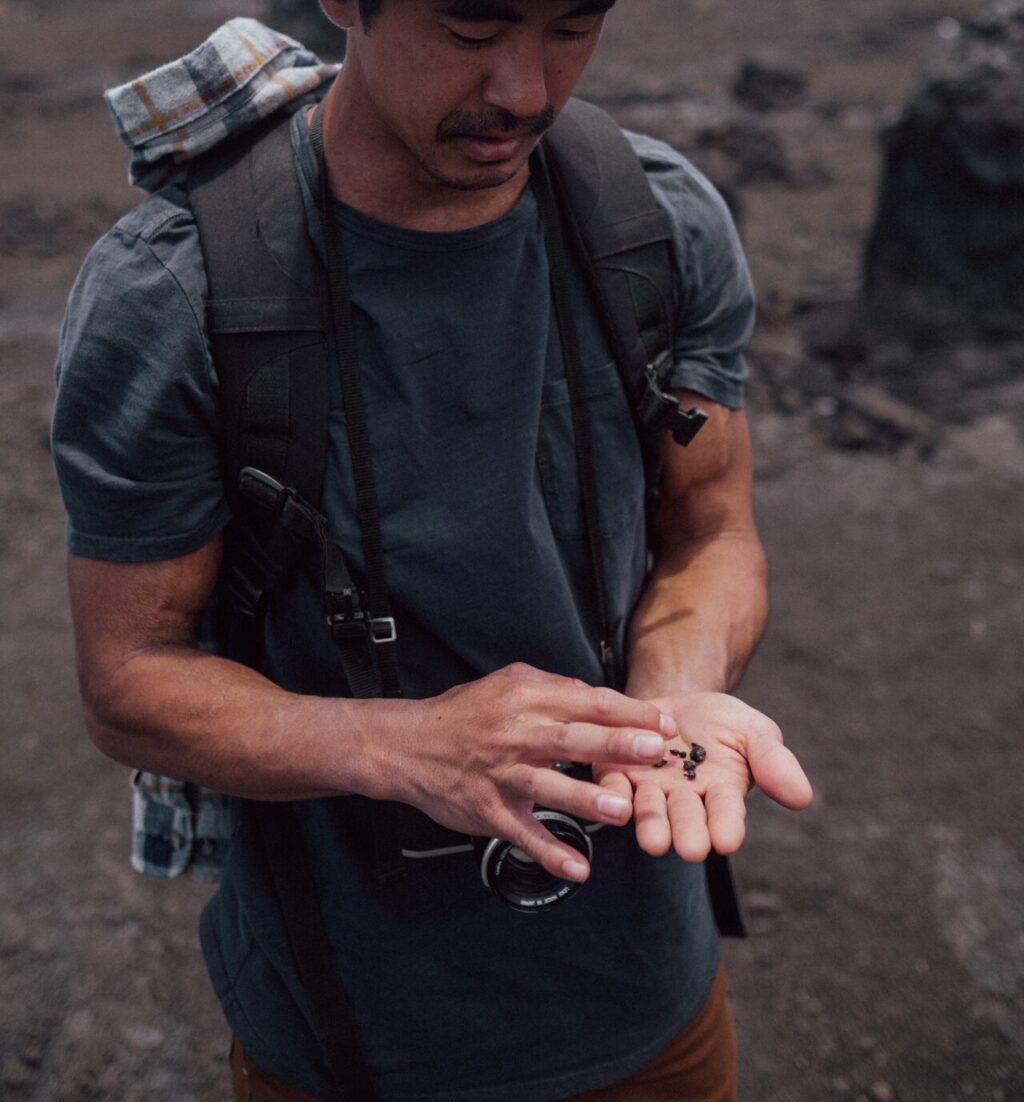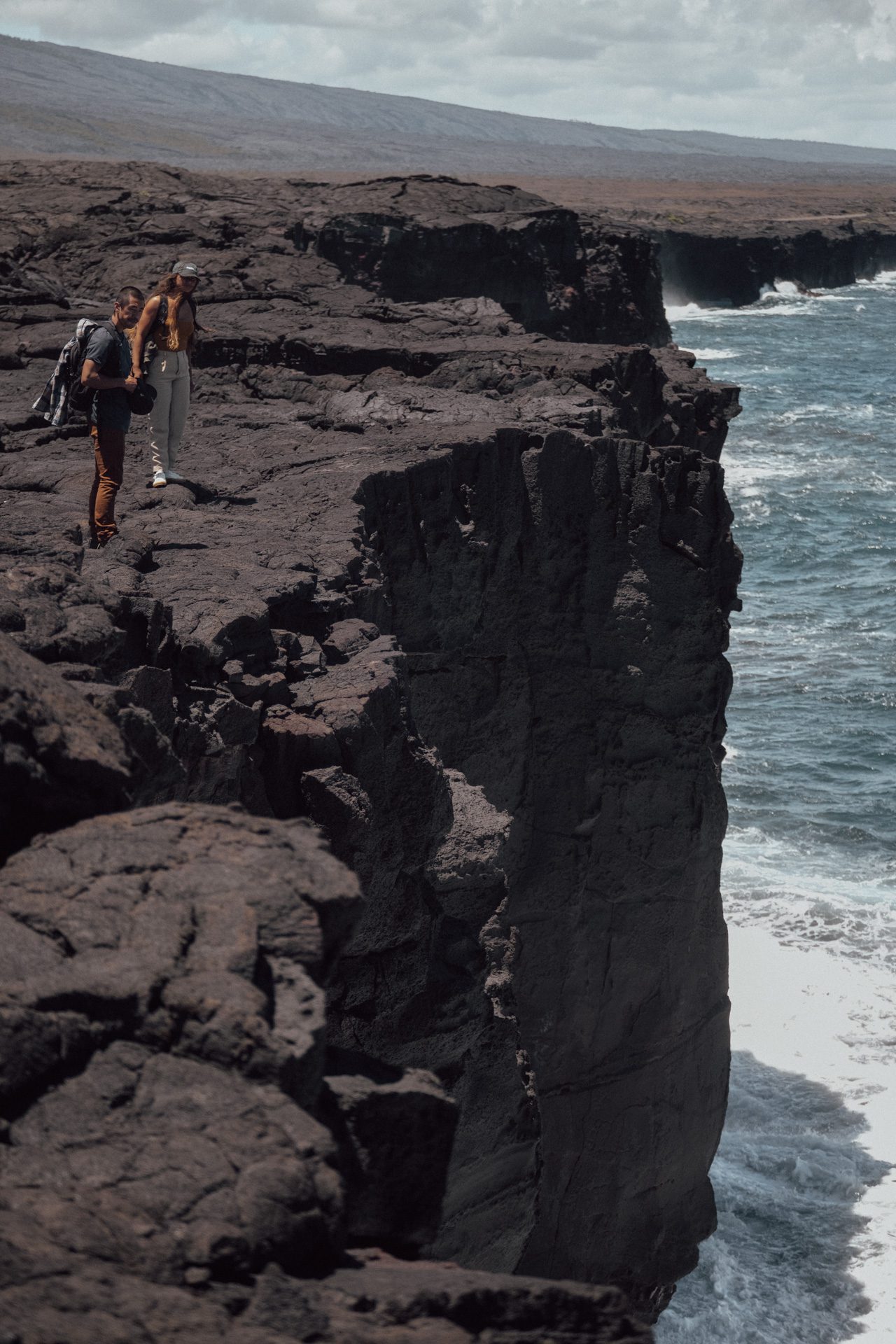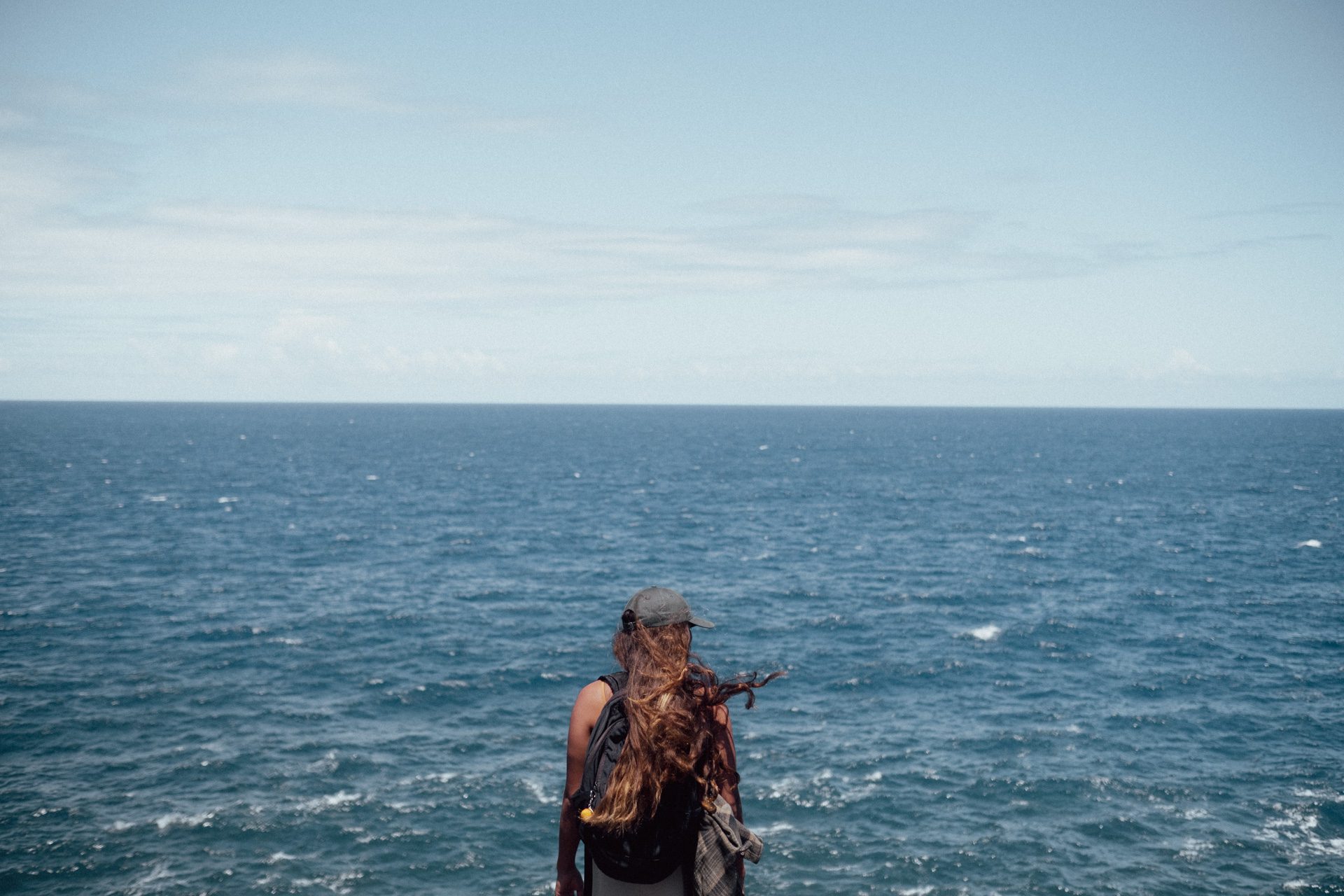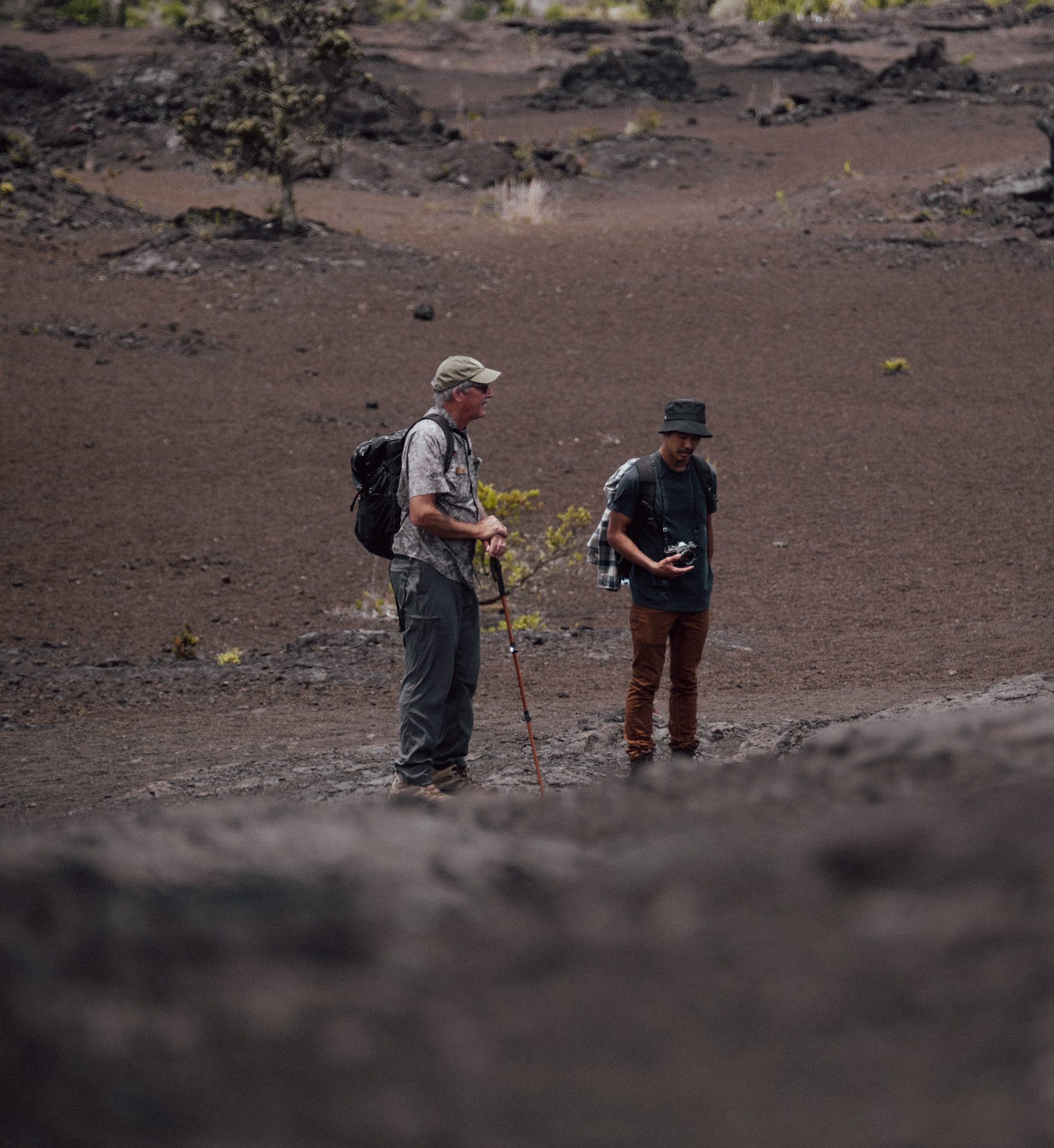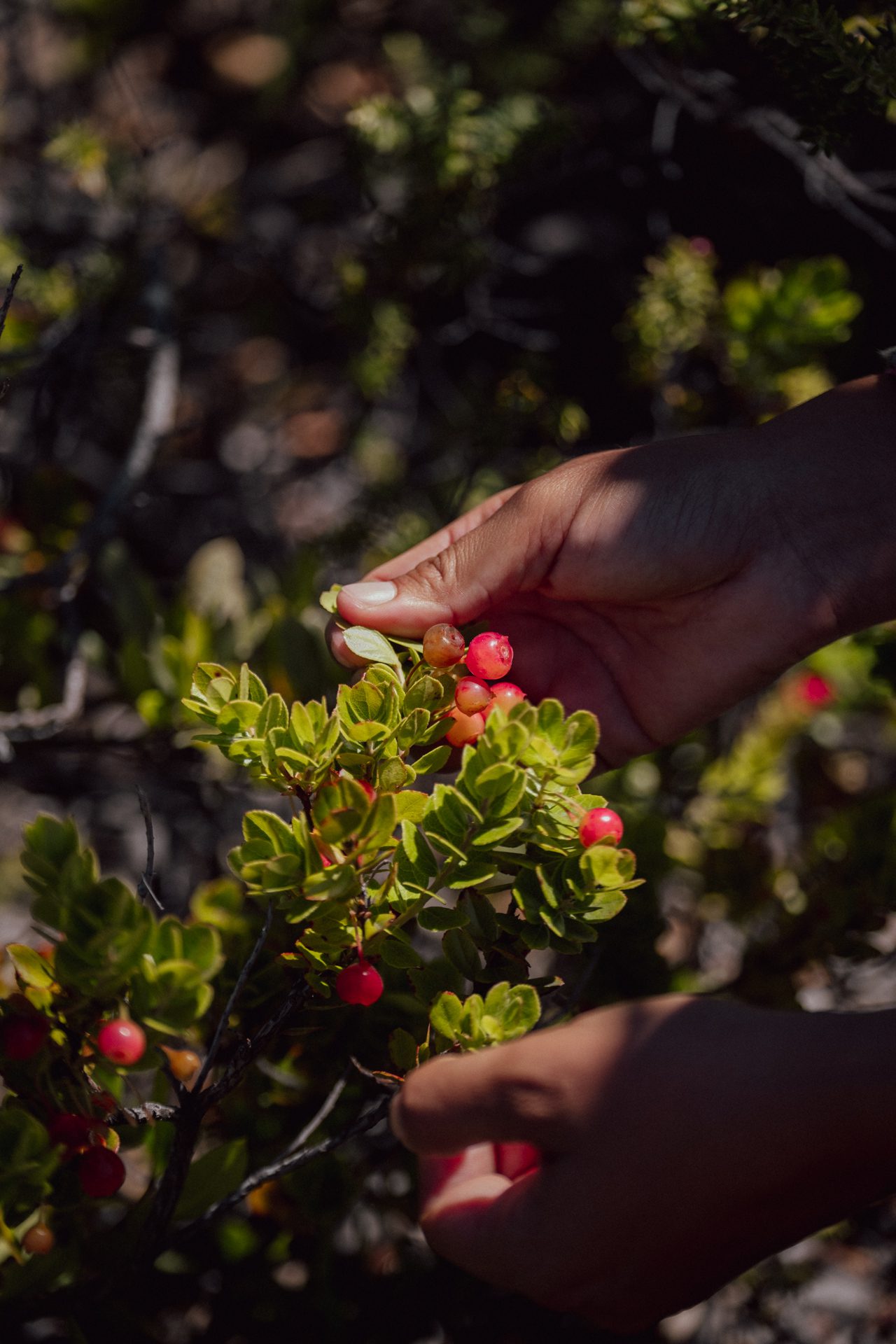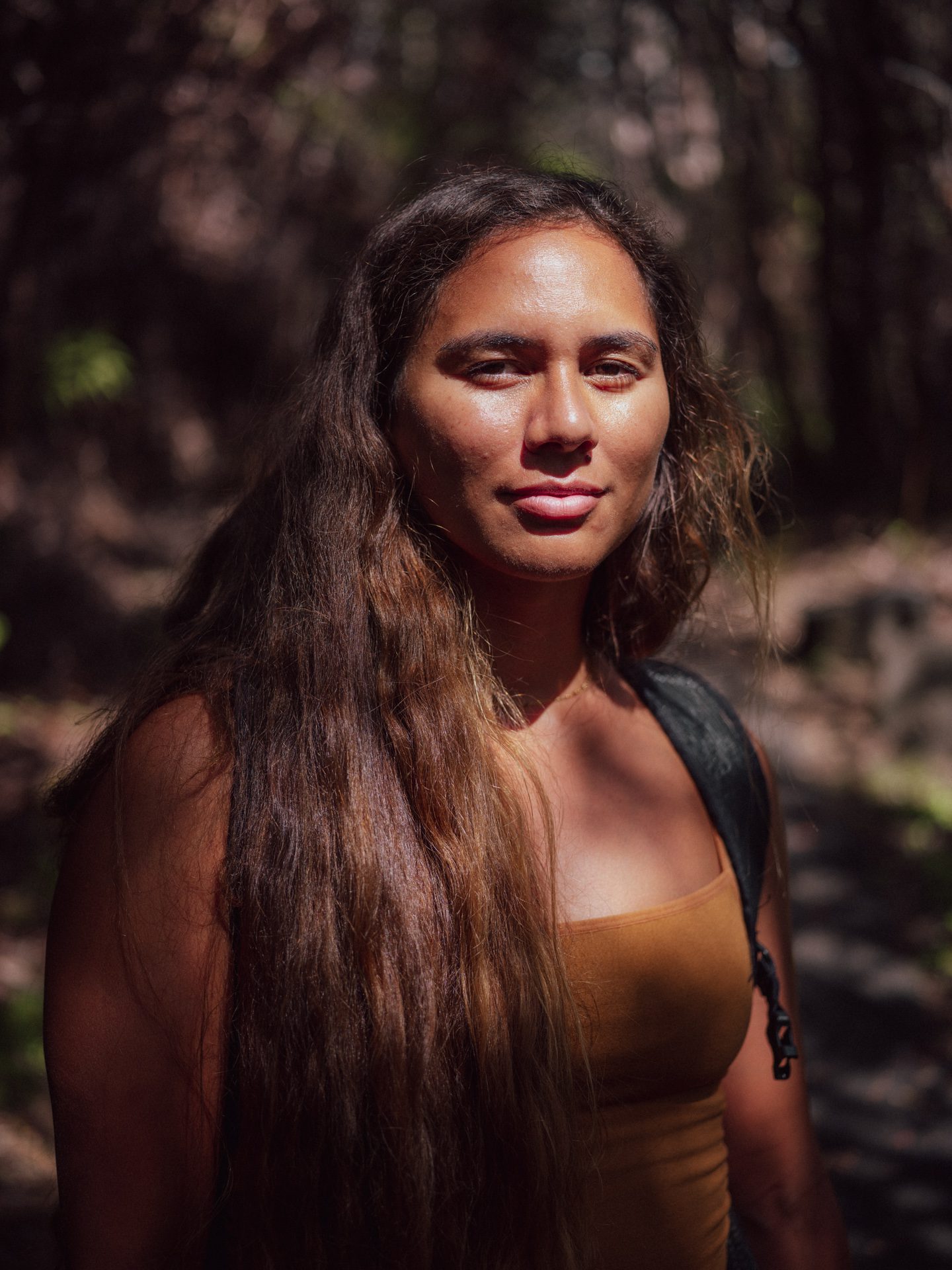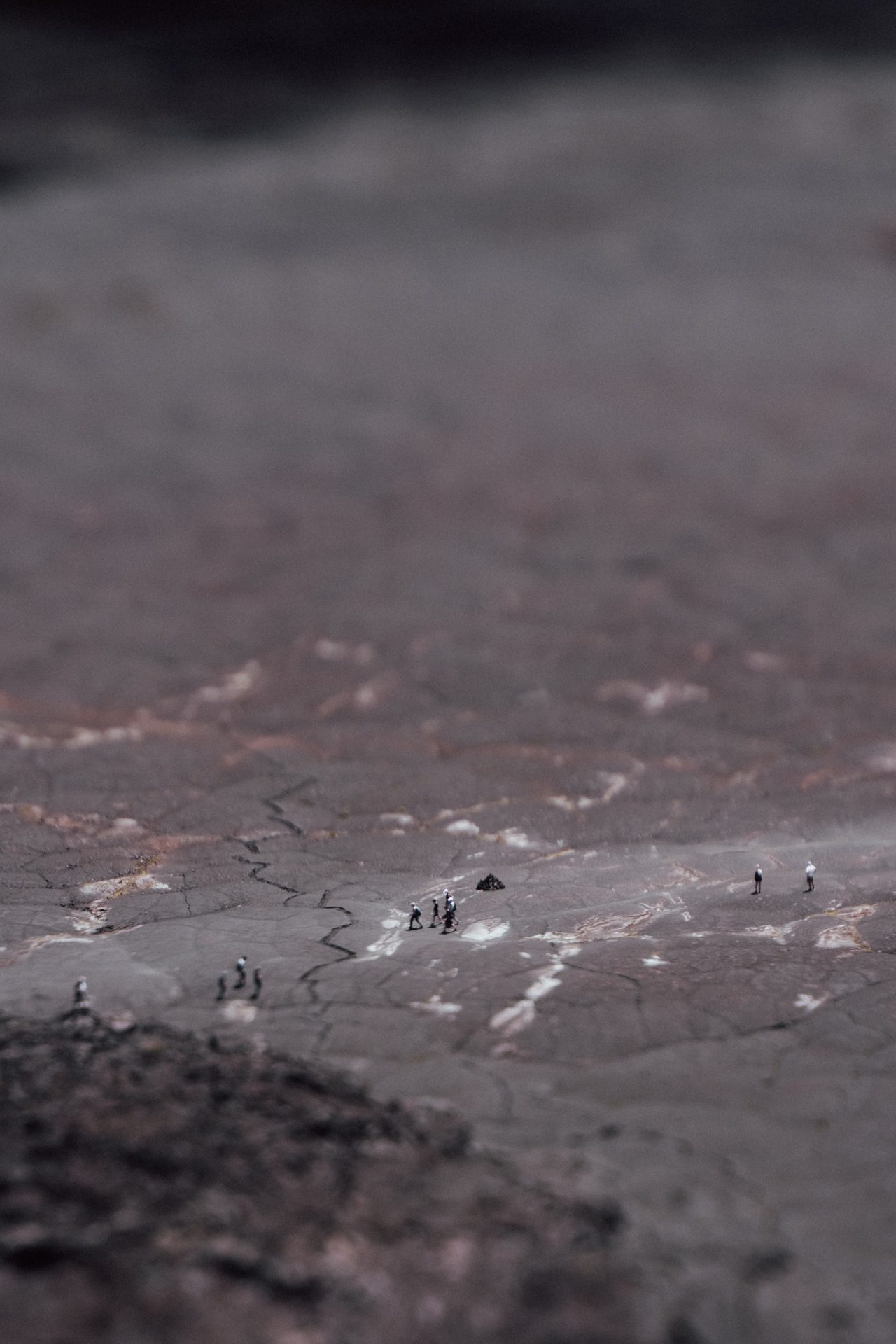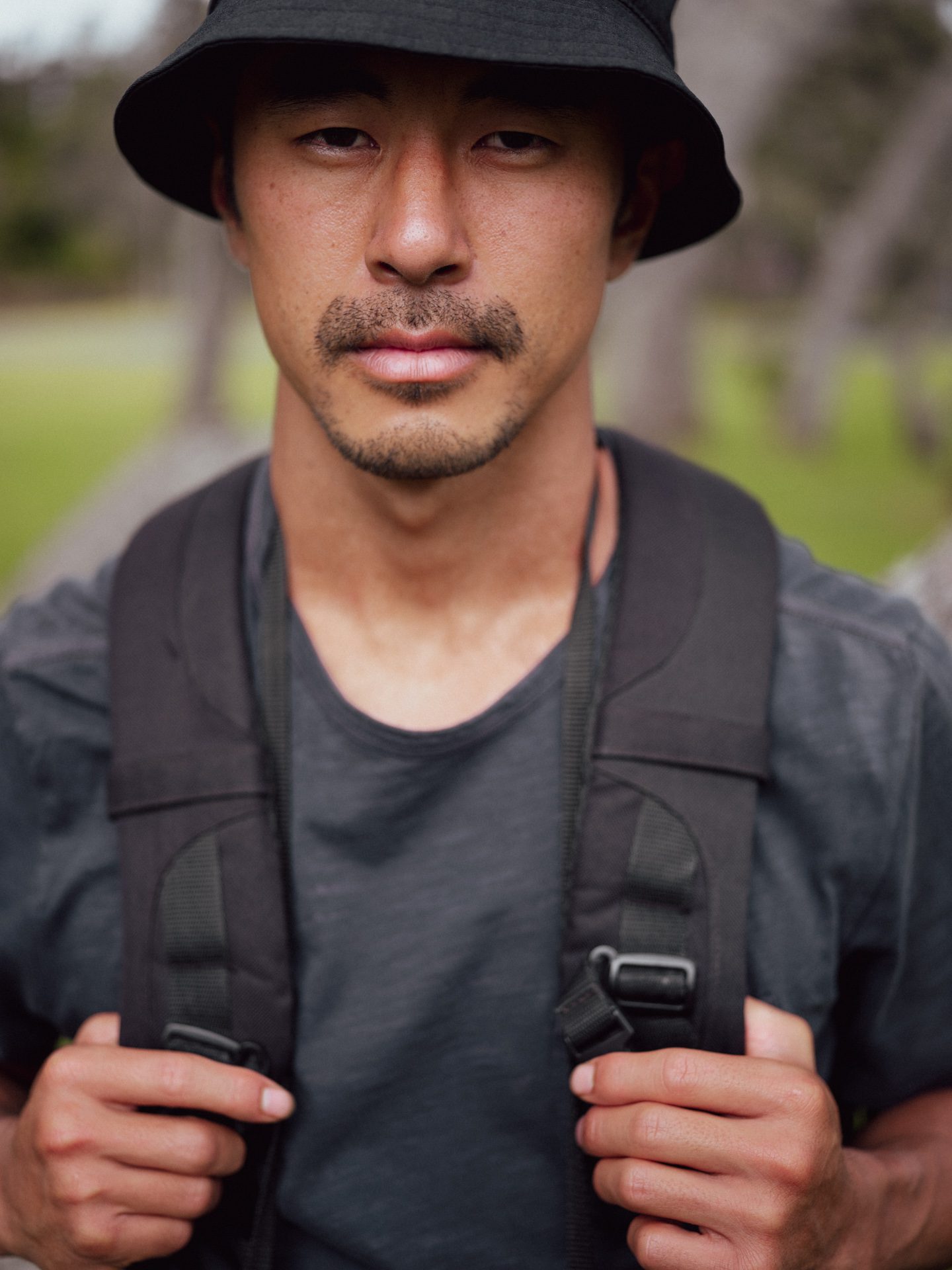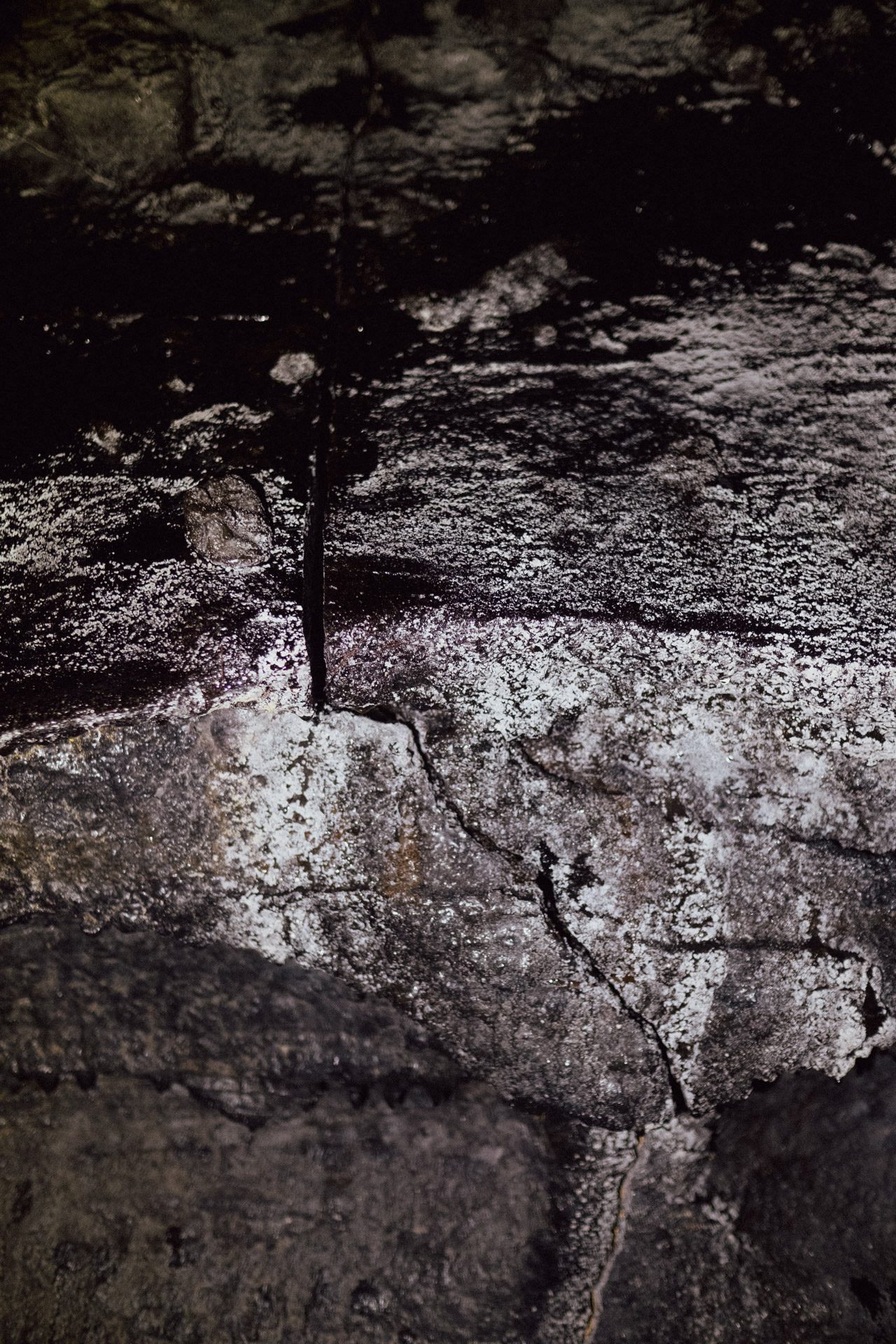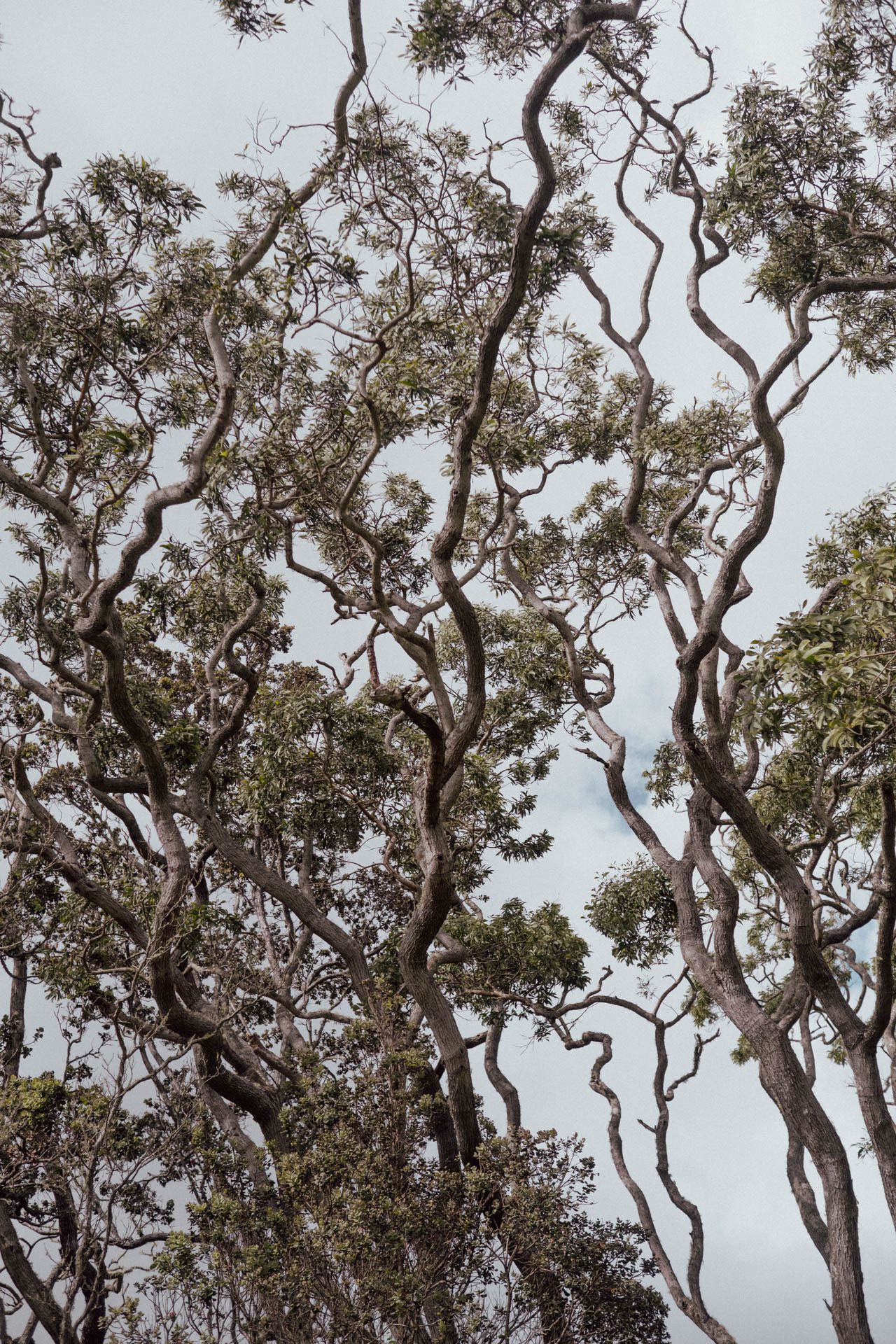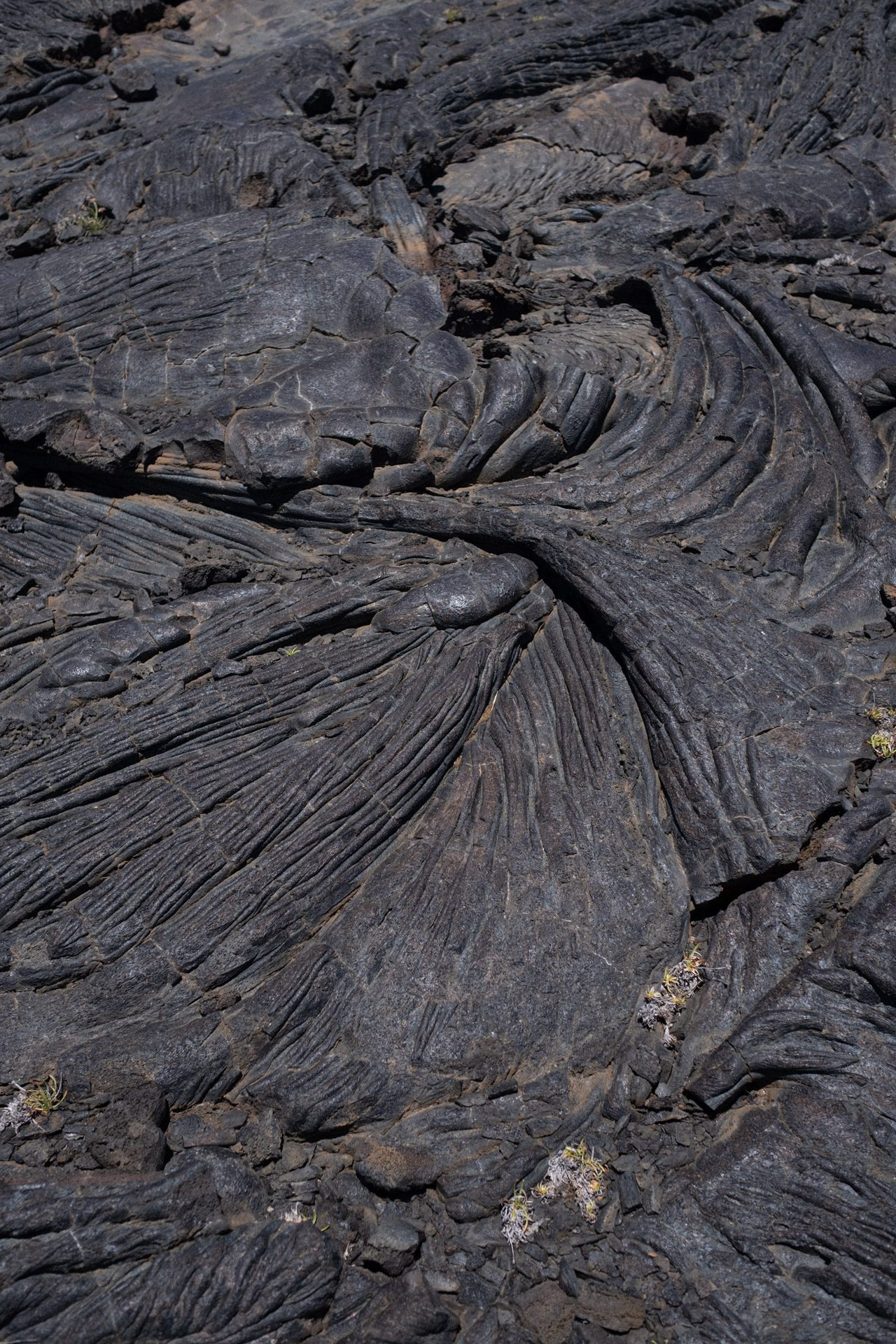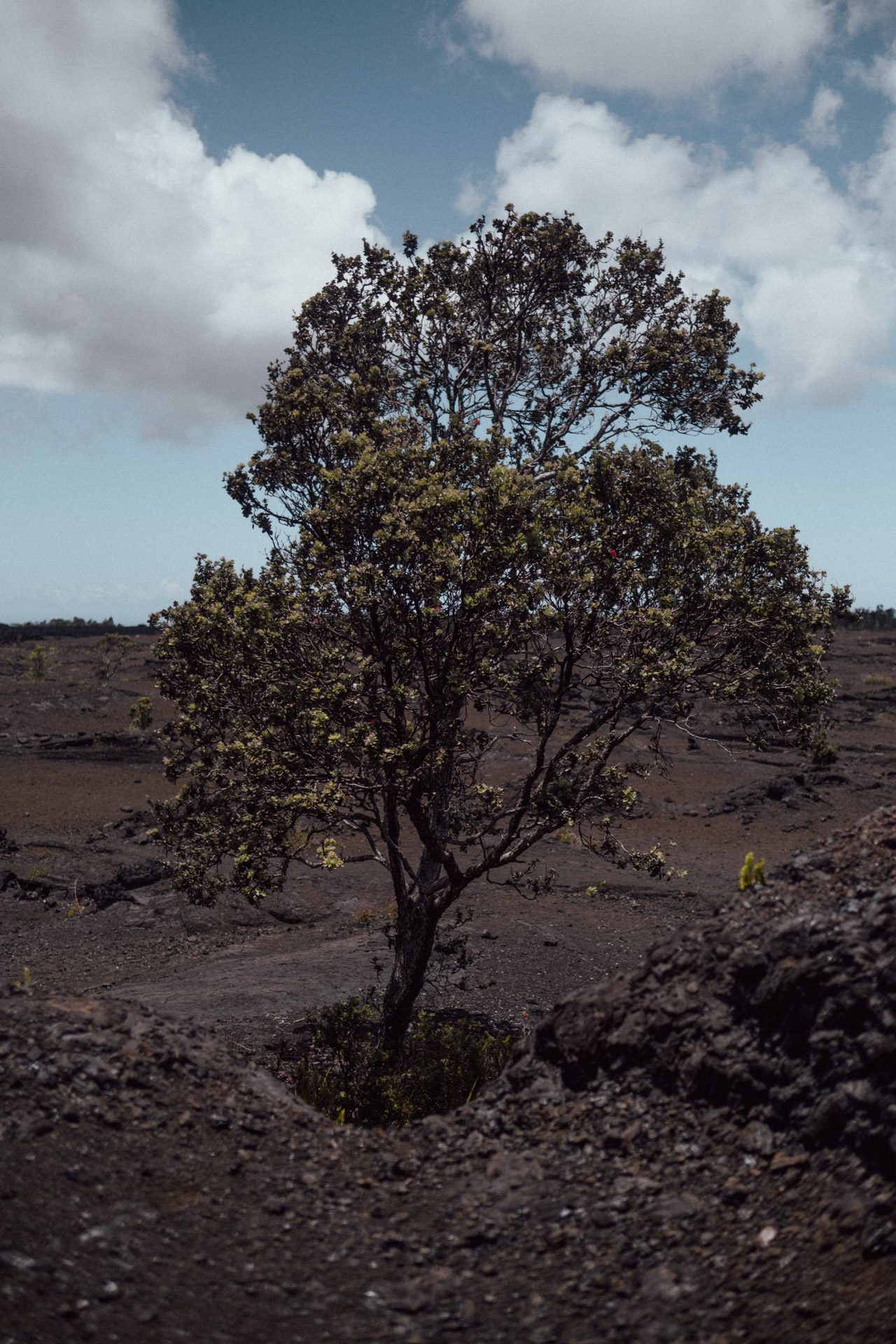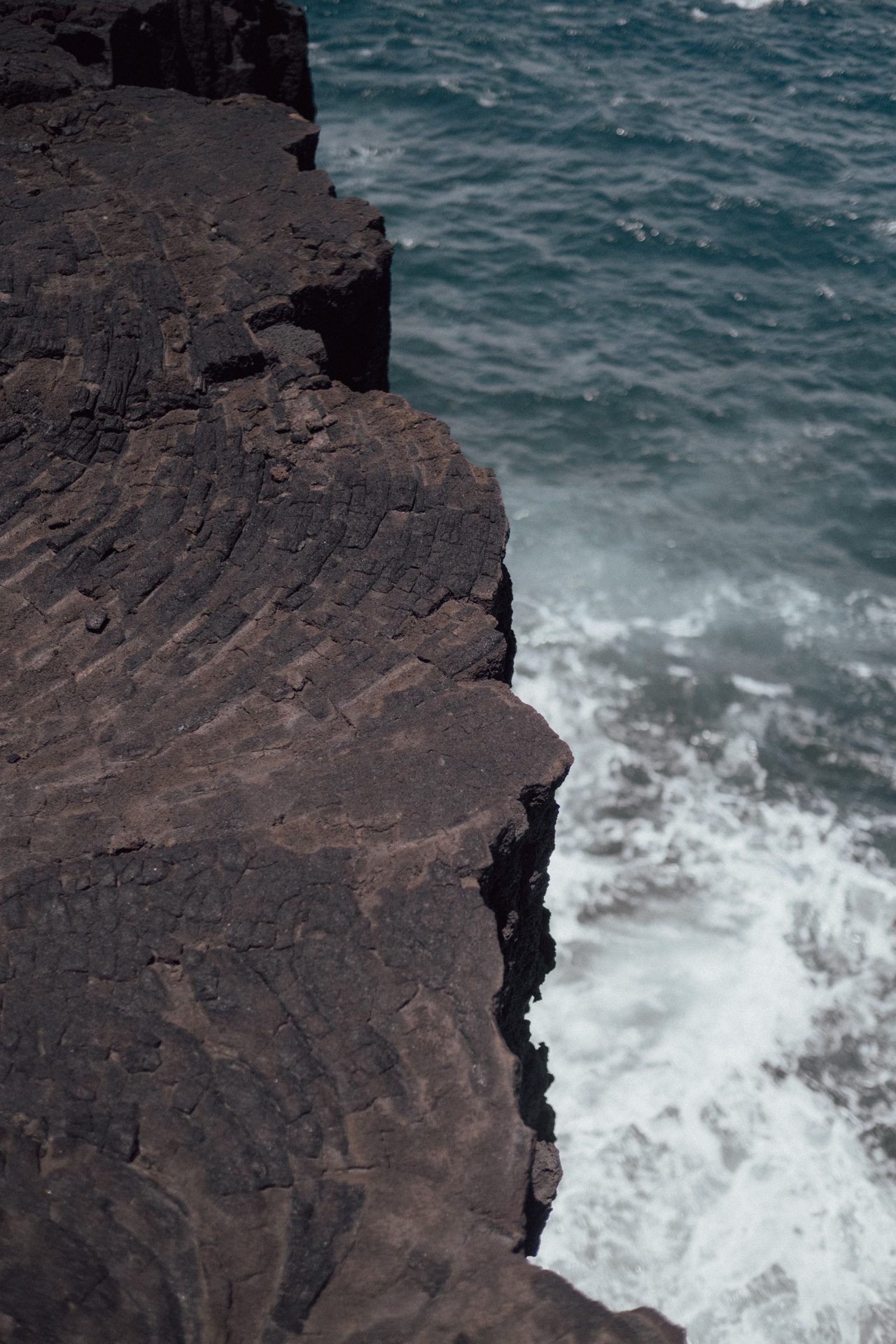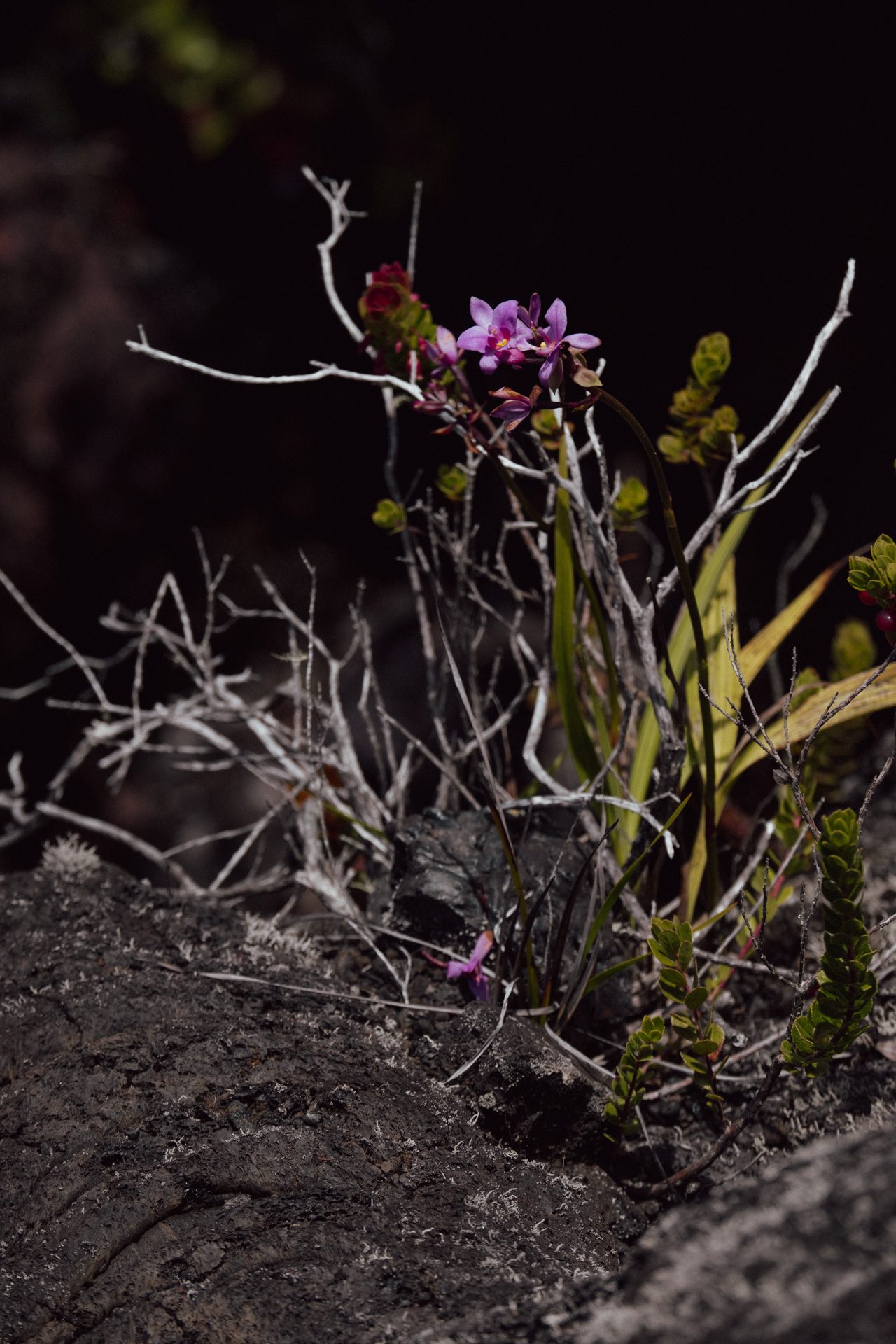LOCATION _ THE BIG ISLAND
HAWAIʻI VOLCANOES NATIONAL PARK
Duration 12 hrs
Rated Moderate to Hard Age 8+
$265 Adults
$240 Children 8 – 12
A Portal
to Earth’s Power
Volcano Unveiled
Discover the heart of volcanic activity on the Big Island, a land sculpted by the powerful forces of earth, air, and fire. With Hawaii Forest & Trail, embark on a comprehensive 12-hour adventure through the diverse landscapes of Hawai’i Volcanoes National Park, a place where eruptions shape the environment, creating a mosaic of natural wonder across seven climate zones.
HIGHLIGHTS
- Visit must-see spots within Hawaii Volcanoes National Park, home of Pelehonuamea, the Hawaiian deity of volcanoes, as your interpretive guide illuminates historical events that have changed the landscape of the Park forever.
- Your certified Park guide will share with you the geology and natural and cultural history that
- makes Hawaii Volcanoes National Park one of the most fascinating places on earth for residents, scientists, and visitors alike.
- Venture down Chain of Craters Road through rainforests, lava flows, and cinder fields.
- Get up close and personal with volcanic formations such as lava tubes, steam vents & craters.
- Visit a large private lava tube, or cave, known for its 30+ foot tall ceiling and bright multi-colored microbial mats living on the cave walls. This lava tube is only accessible to guests of Hawaii Forest & Trail.
The Volcano Unveiled adventure with Hawaii Forest & Trail will change slightly depending if Kīlauea is actively erupting or not. If it isn’t, don’t fret. There’s tons to do and see in Hawaiʻi Volcanoes National Park, and your guide will know all the spots. Plus, that private lava tube in Puna is one of the best on the island — and not something most people get to explore.
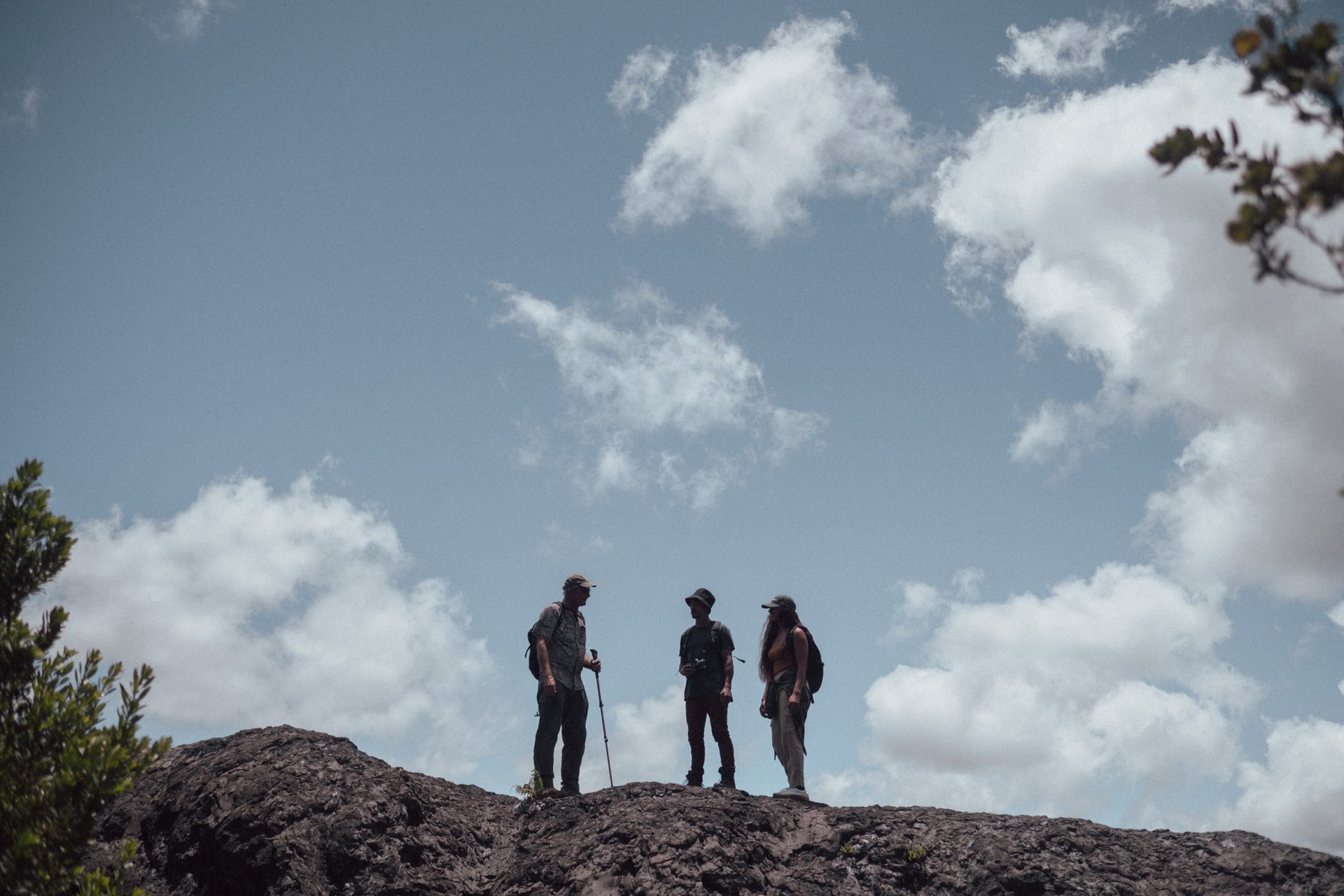
Schedule
Trips depart daily from Hawaii Forest & Trail Kona Headquarters, Waikoloa Queen’s Market Place, The Shops at Mauna Lani, Waikoloa Plaza, and Kea’au. Tour time is approximately 12 hours round trip from Kona, 11 hours from Waikoloa, and 7-8 hours from the Kea’au pick-up location.
What’s Included
Guests are served a deli-style picnic lunch and a warm picnic dinner with snacks and beverages available throughout the day. Hawaii Volcanoes National Park entrance fees and private cave access fees are also included.
Gear Provided
Walking sticks, flashlights, daypacks, raingear, bug repellant, & sunscreen.
What to Bring & Wear Comfortable closed-toe walking shoes, reusable water bottle, long pants, light jacket, or sweatshirt.
Restrictions
Guests should be able to hike on uneven or rocky terrain. We sometimes encounter cool, wet, or muddy conditions. Please note the access road to our private lava tube does contain some unpaved and bumpy sections. Due to these road conditions this tour may not be suitable for those guests who are prone to motion sickness. Other tour restrictions may apply.
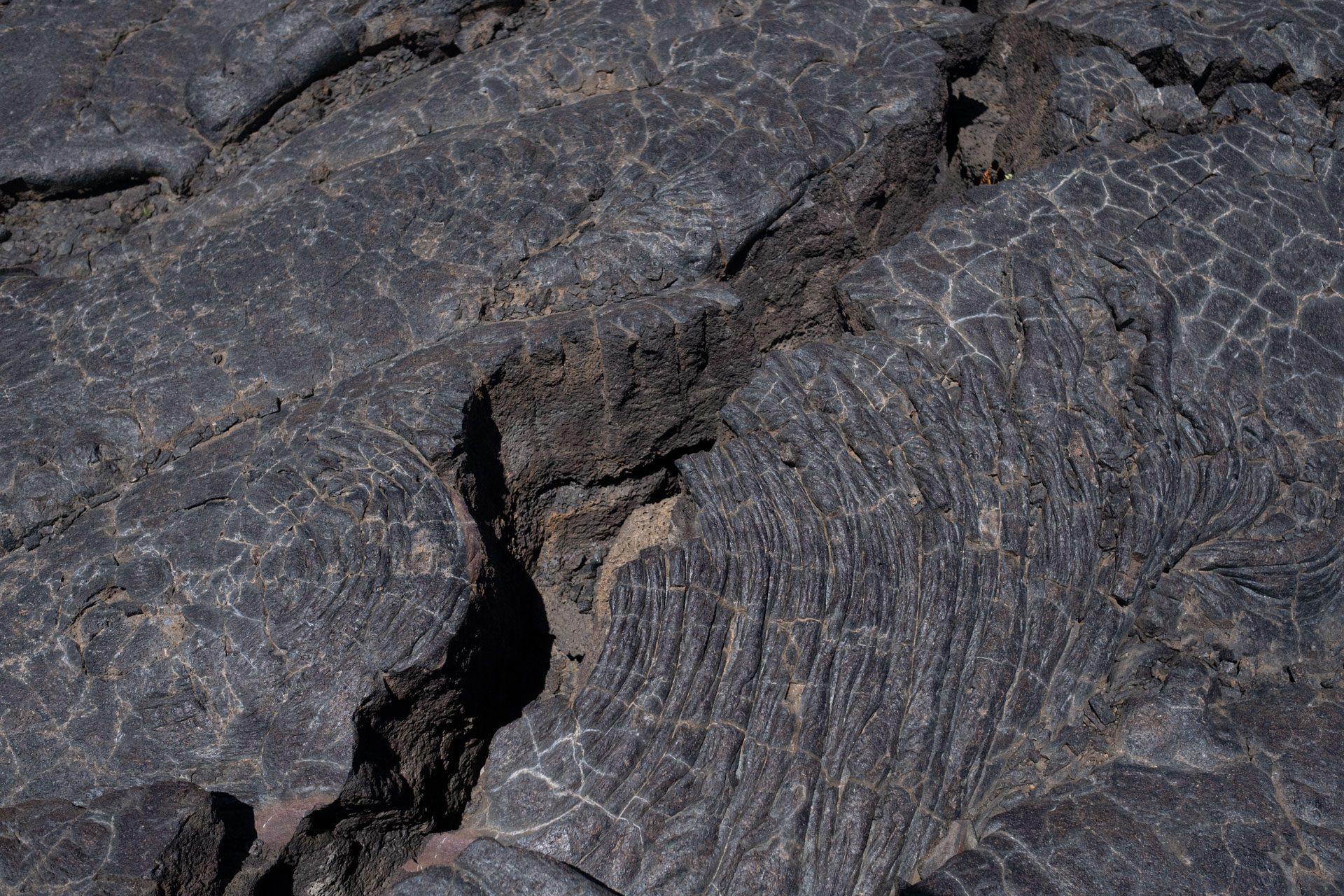
REVIEWS
5 STARS
Recommended by 97% of travelers
(179 Reviews)
★★★★★
Our guide Guinevere made the tour an incredible experience. She was knowledgeable about everything we went to, and everything we drove by. The company has their own lava tube we got to explore, which was a very cool, unique experience. Walking around the lava remnants was like walking on the moon, probably as close as you can get on earth. Rain coats and walking sticks were available, as well as water and snacks. A simple picnic lunch and dinner were included. We initially planned to drive ourselves to the park, but I’m so glad we went with a guided tour. We wouldn’t have seen 90% of what we did, or learned so much about volcanoes and the area. Definitely a must do.
★★★★★
The trip was wonderful.The guide was very knowledgeable and very professionally organised.We went to a lava tube and Volcano national park where we viewed the volcano during the daytime and after sunset.The eruption is even more spectacular after dark.Small group.Highly recommend.
★★★★★
It was a great experience! Eugene was our tour guide and he took excellent care of us. We got to go in a lava tube owned by this company so not filled with tourists. He gave us alot of information about volcanoes and showed us the highlights of the park. We would have been wandering around and not knowing what to look at. The tour included lunch and dinner which were delicious. Our evening meal was by the coast in a beautiful spot with amazing views. Unfortunately our bus broke down, but a new one was on it’s way soon, and Eugene even had hot cocoa for us as we waited. Highly recommend!
★★★★★
Tracy, our guide, impressed by her volcanic knowledge and her own experiences with the volcane outbreaks. She opend our eyes for things hasty tourists wouldn’t see. We therefore returned the next day on our own to the park to see more and to hike the Kilauea Iki trail. A once a lifetime experience!
★★★★
It was awesome with a lot of good views. John was amazing. As a Norwegian I just wish it was more hiking and less driving. But learned a lot on this tour. And wish we could get closer to the lava.
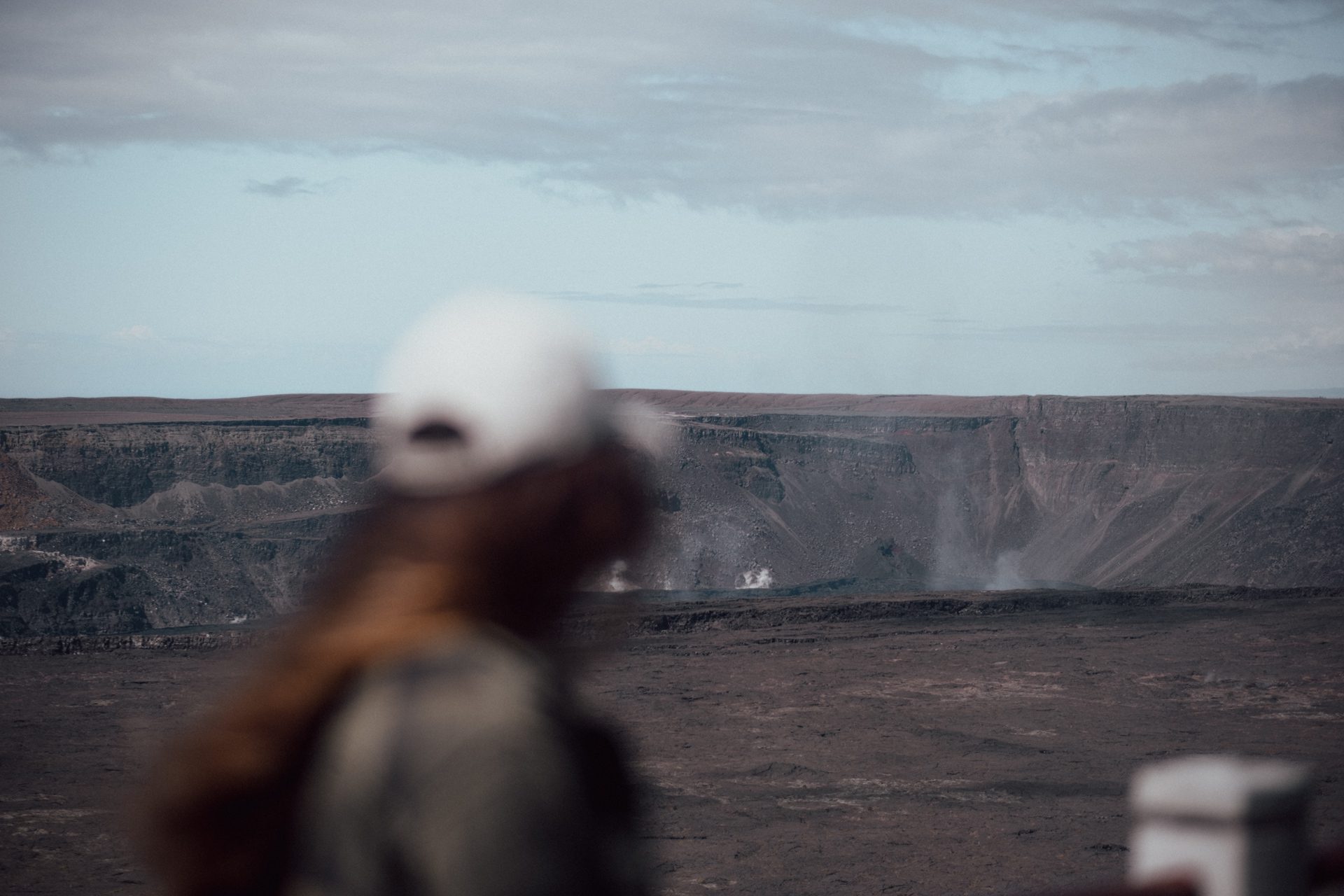
The Fiery Essence of Hawai’i Volcanoes National Park
Pele, the goddess of volcanoes, embodies the dual nature of creation and destruction in Hawaiian mythology, wielding her power to mold the Hawaiian Islands. Residing in Halema’uma’u crater at Kīlauea’s summit, the youngest and most active volcano, Pele’s presence is palpable across the volatile landscapes of Hawai’i Volcanoes National Park. Here, Mauna Loa stands as the world’s largest volcano, complementing Kīlauea’s dynamic activity. Together, they define the park’s awe-inspiring terrain, from lush coastlines to fiery summits. Visitors are drawn to the spectacle of oozing lava and eruptive displays, capturing the raw beauty of Earth’s inner workings within this expansive park, a place where every vista and molten flow tells the story of Pele’s enduring legacy.
Pele’s Hair
On a sunny day, the summit area of Kīlauea looks like it’s covered in spider webs. You’ll see fine fibers reflecting in the light and glimmering on the landscape. What you’re actually seeing are long strands of silica formed when a gas bubble burst at the surface of an eruption. Peleʻs hair can stretch out up to several feet long and about ten times thinner than an eyelash.
Pele’s Tears
When lava fissures spew molten rock, it hardens in the air and falls as tephra. Some of this pyroclastic material forms Peleʻs tears: smooth, teardrop-shaped drops of hardened lava. Peleʻs tears and hair are generally formed together and separate during the process depending on how fast the lava droplets are ejected into the atmosphere.
Steam Vents
Wahinekapu, or the steaming bluff, is where steam rises up from cracks in the ground near the summit of Kilauea. It's also a great spot for a facial. Precipitation trickles down through the porous ground and hits rocks heated by magma from below. Steam rises up through stable cracks, formed in the rift zone near the summit of Kilauea.
Kauhi Cave _ Life in a Lava Tube
Cut a cross section of this island and youʻd have a volcanic version of swiss cheese-holes through each layer of lava as this island formed. Lava tubes are everywhere on this island. Formed when the exposed surface of an above-ground flow hardens, insulated lava eventually carves its way down into the ground. The eruption subsides and you’re left with an empty tube.

The twists and turns of a lava tube reveal nāhuku hanging from the ceiling. Astute observers might think they’re normal stalactites, formed with every drip of water as minerals accumulate. Thatʻs not the case in a lava tube. Literally translated as the protuberances, these lava icicles dripped down when molten lava was flowing through the cave and melted the ceiling.
Some lava tubes in Hawaiʻi host rare bacteria. Scientists are still discovering different species of these simple organisms and learning how they work together to sustain life in pitch-black caves. Waste products of the microbial matting is visible on the cave walls.
THE TWISTS AND TURNS OF A LAVA TUBE REVEAL NĀHUKU HANGING FROM THE CEILING
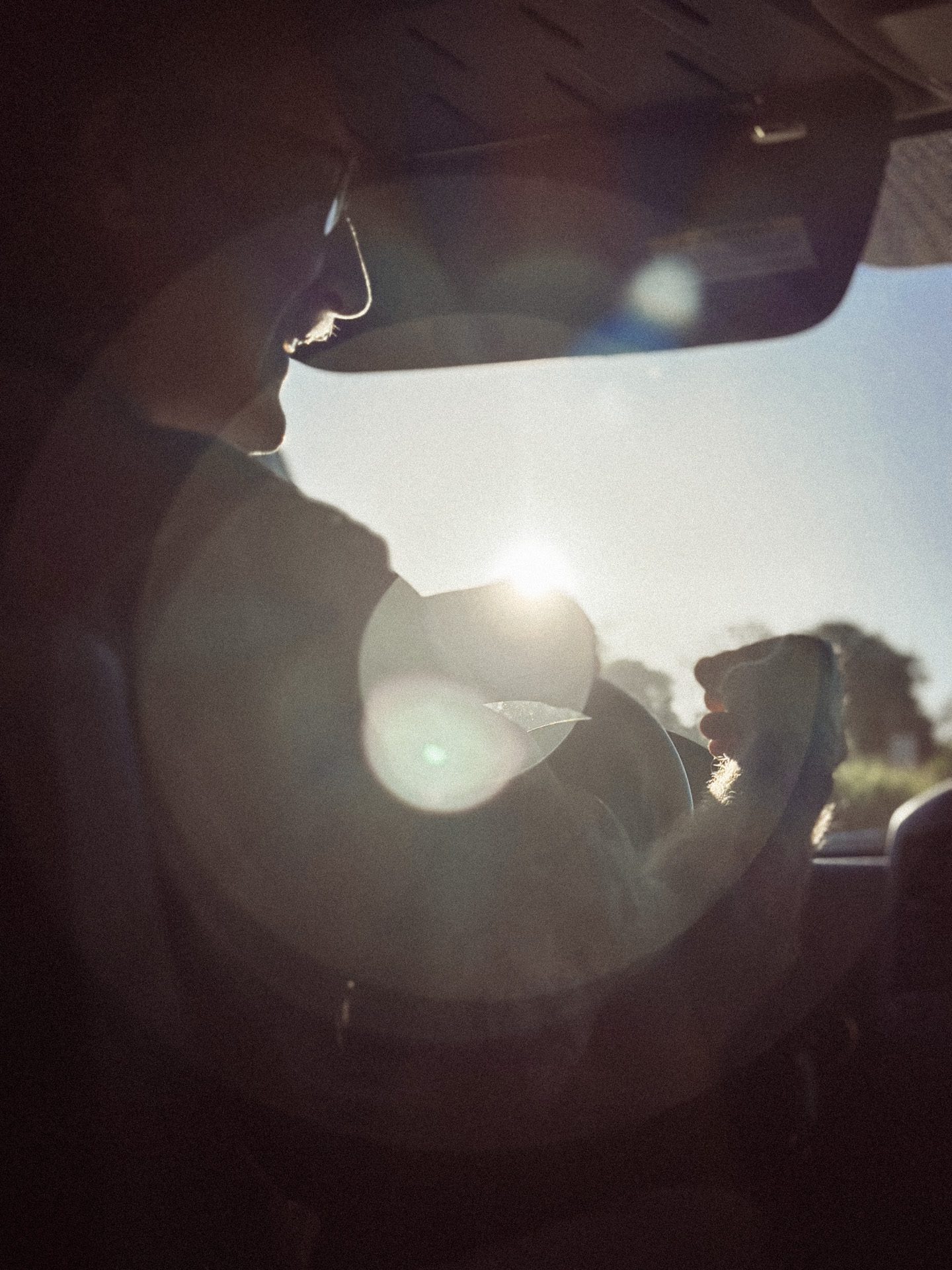
Hawaii Forest & Trail _ Your Guide to Big Adventure
Hawaii Forest & Trail started in 1993 with an emphasis on conservation and education. They’ve got island-wide partnerships to get guests into private lands and wildlife refuges. Specialized trips stretch across the geological, ecological, and cultural diversity of Hawaii.
Learn More about Volcanoes National park
Hawai’i Volcanoes National Park is a mesmerizing showcase of nature’s raw power, where visitors can explore the diverse landscapes sculpted by active volcanoes on Hawai’i Island. This national park, a designated UNESCO World Heritage site, offers an immersive experience of the geology, ecology, and cultural significance of one of the most dynamic volcanic regions on Earth.
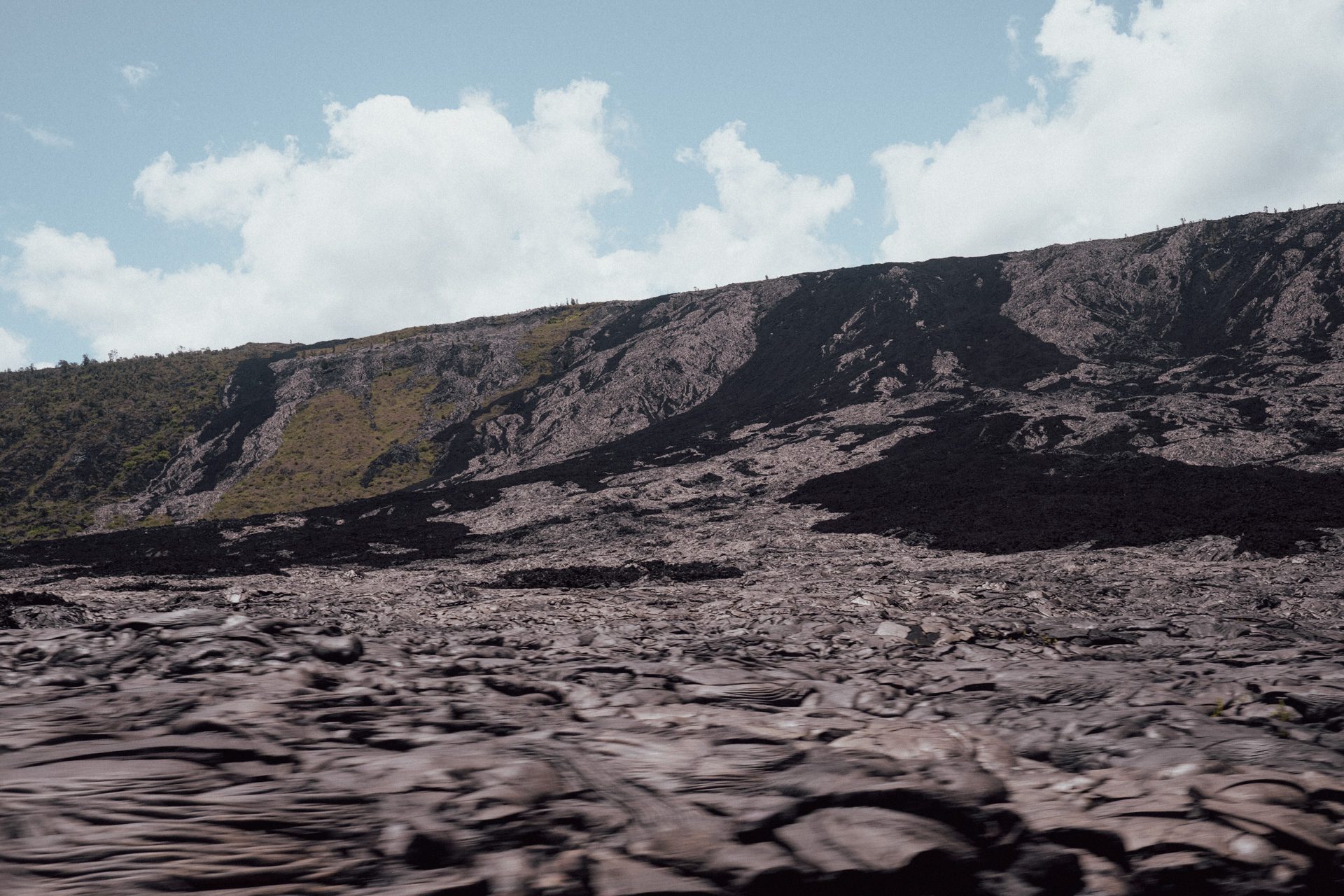
The Dynamic Duo: Kīlauea and Mauna Loa
Central to the park’s allure are the continuous activities of Kīlauea and Mauna Loa, two of the park’s prominent active volcanoes. Kīlauea, a shield volcano, is one of the most active volcanoes in the world, providing unique opportunities to witness volcanic eruptions and the mesmerizing flow of molten lava across the rugged landscape. Mauna Loa, in contrast, offers a grand scale of volcanic wonder, standing as the largest shield volcano on the planet.
Trails and Tubes: Hiking and Exploration
Embarking on a hike within Hawai’i Volcanoes National Park is to walk on the very ground shaped by Pele’s power. The park’s trails, including the famous Kīlauea Iki Trail and the Crater Rim Trail, offer hikers diverse experiences—from traversing lush rainforests to trekking across stark lava fields. One must not miss the Thurston Lava Tube, an accessible cavern where visitors can walk through a tunnel once filled with streaming lava, providing a palpable connection to the island’s volcanic forces.

Visitor Centers: Gateways to Knowledge
The park’s visitor centers, especially the Kīlauea Visitor Center, serve as essential starting points for exploration and learning. These centers provide invaluable information, exhibits, and ranger-led programs that deepen visitors’ understanding of the park’s volcanic activity, ecological diversity, and cultural heritage. They are hubs where guests can plan their visits, ensuring they experience the park’s highlights, including the latest lava flows and volcanic eruptions.
A Living Laboratory and Cultural Treasure
Hawai’i Volcanoes National Park is not only an active volcano site but also a living laboratory where ongoing research unravels the mysteries of volcanic processes and their impacts on ecosystems. Additionally, the park’s designation as a UNESCO World Heritage site underscores its global importance, preserving its unique natural and cultural resources for future generations.
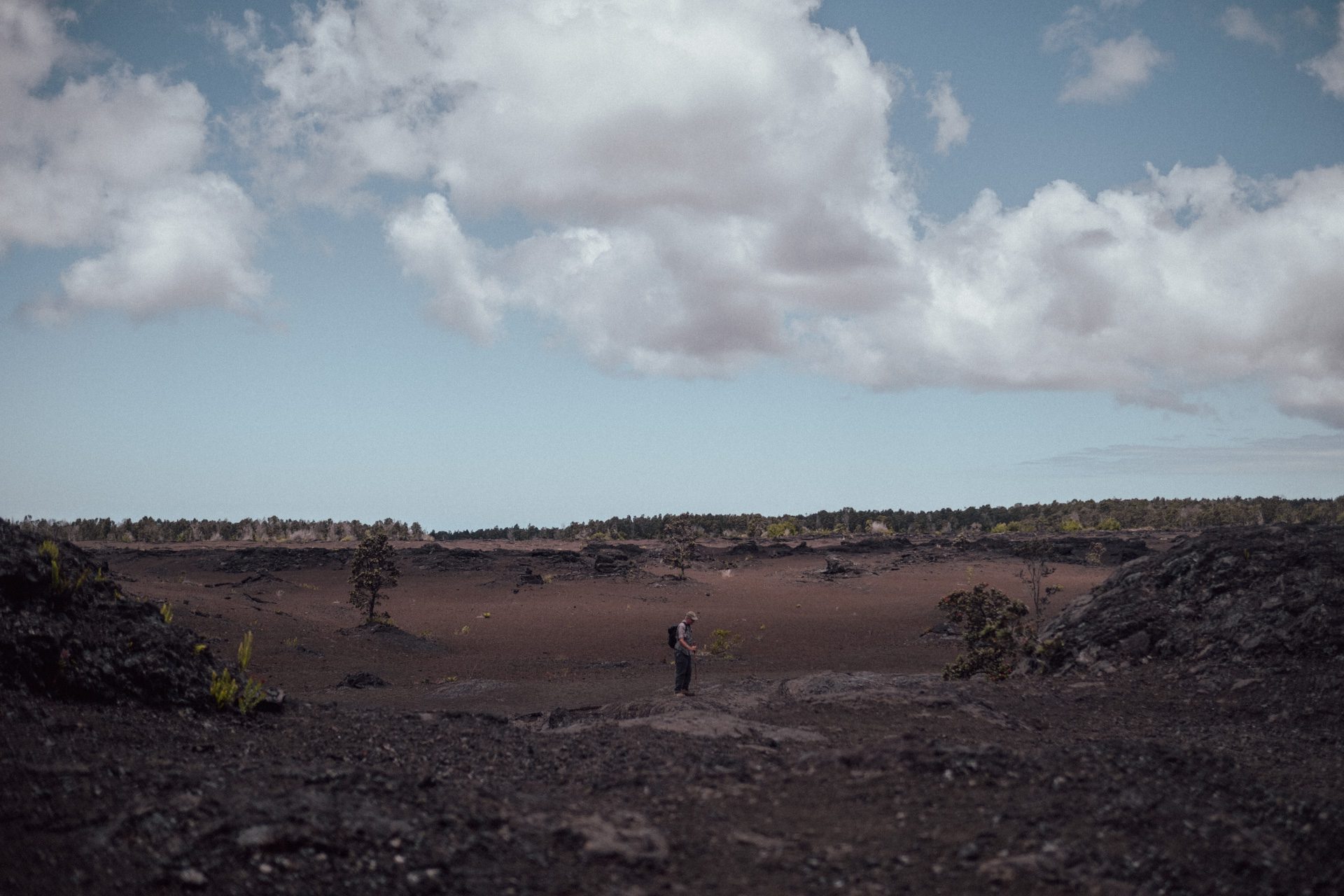
Connecting with the Land
A visit to Hawai’i Volcanoes National Park is a profound journey into the heart of Hawai’i Island, offering a deeper appreciation for the forces that shape our planet. Whether witnessing the glow of lava at night, exploring the depths of a lava tube, or learning about the island’s native flora and fauna, the park provides a myriad of ways to connect with the natural world. Each hike, view, and educational opportunity invites a greater understanding of this unique environment, celebrating the beauty and power of Earth’s volcanic majesty.
Exploring the Depths and Heights: Diverse Volcanic Landscapes
Within Hawai’i Volcanoes National Park, the dramatic Halemaumau Crater captivates visitors with its stirring volcanic activity, serving as a vivid testament to the park’s dynamic nature. A short distance away, the Kilauea Iki Crater and its overlook provide breathtaking views and insights into the processes and power of historic volcanic eruptions. The imposing Mauna Loa Volcano, one of the largest on Earth, offers a stark contrast with its massive, serene presence looming over the landscape. Nearby, the charming Volcano Village nestles in the lush Hawaiian foliage, offering a quaint and peaceful retreat for those seeking to immerse themselves in the park’s natural wonders and volcanic majesty.
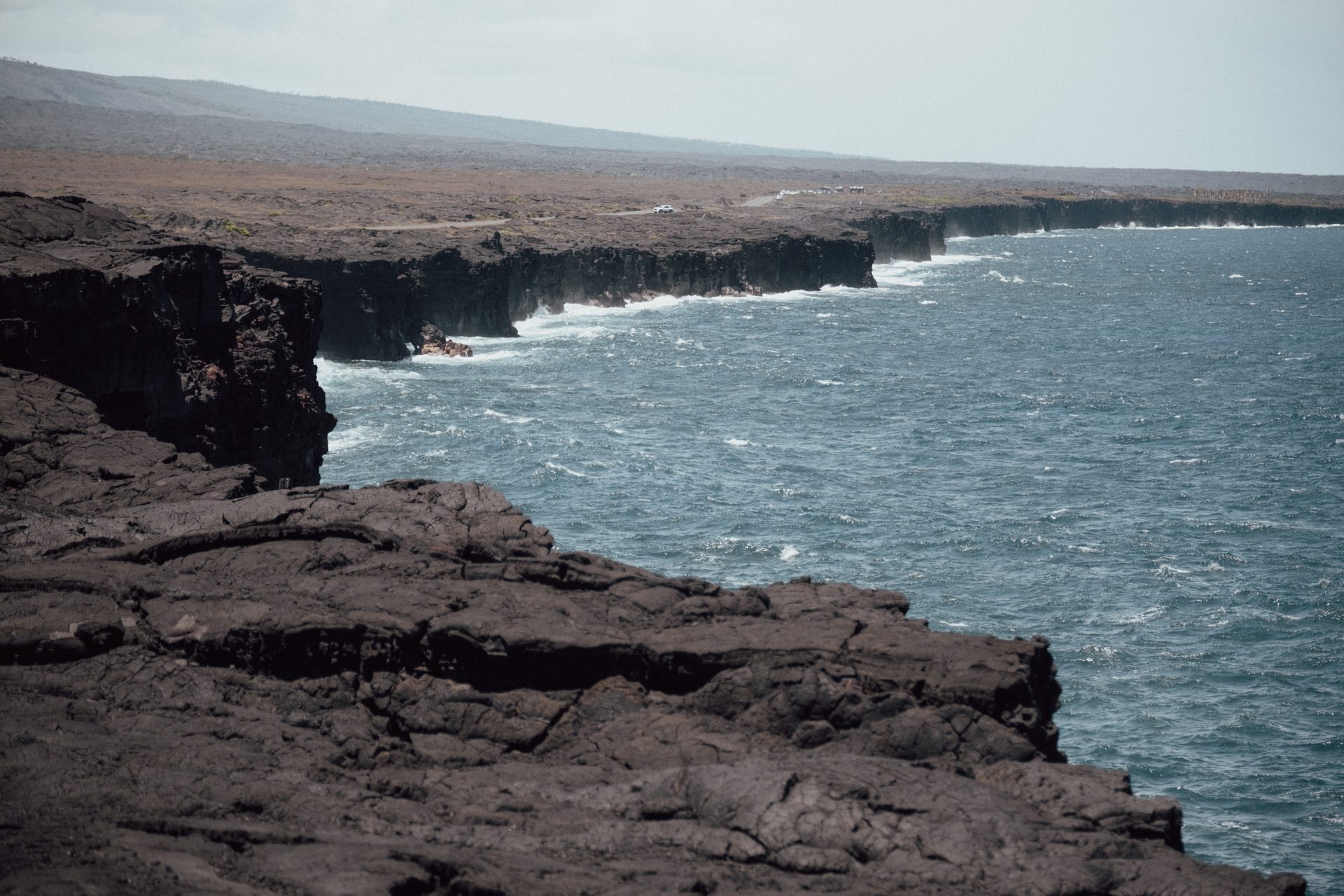
Echoes of the Past: Connecting Cultures and Volcanoes
Within the expansive landscapes of Hawai’i Volcanoes National Park, the Puʻu Loa Petroglyphs stand as a profound testament to the Native Hawaiian culture, intricately carved into the hardened lava by ancient hands. These petroglyphs, situated near a Hawaiian volcano, provide a unique window into the past, illustrating the deep connection between the Native Hawaiian people and their ever-changing volcanic environment. Amidst this sacred site, the echoes of its history of volcanic eruption resonate, underscoring the powerful natural forces that have shaped and continue to influence this storied land.
Experiencing the Heart of Pele: Volcano House
Nestled on the rim of Kīlauea’s caldera, Volcano House on Hawaii Island provides a front-row seat to the mesmerizing lava flow within Hawai’i Volcanoes National Park. This historic lodging, established in 1846, allows guests to observe the volcanic fury from the comfort of their rooms or while dining at The Rim. Conveniently situated near the park’s visitor center and Crater Rim Drive, Volcano House offers unparalleled access to explore the park’s wonders, making every stay a unique encounter with the raw beauty of one of the most active volcanoes on Earth.
